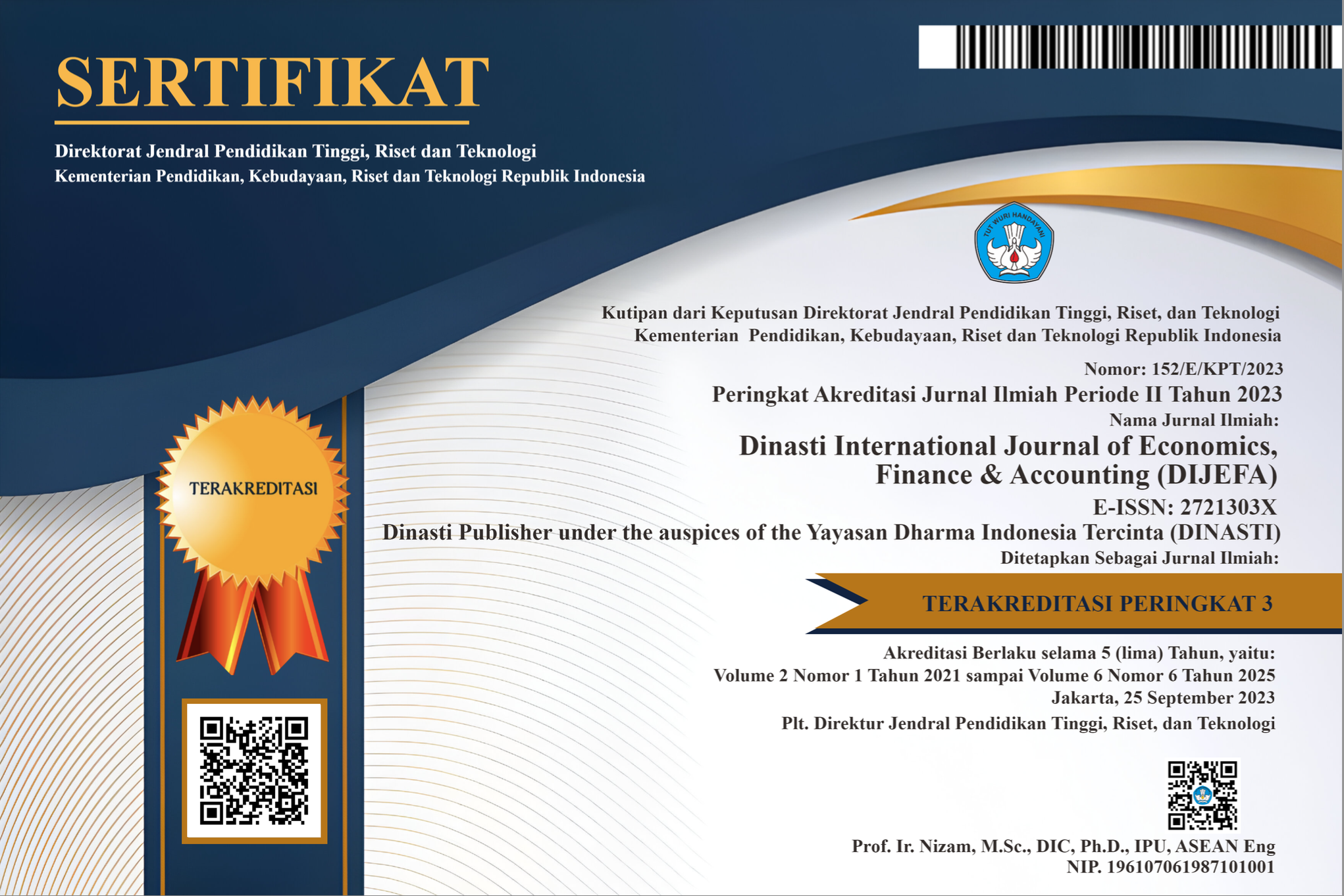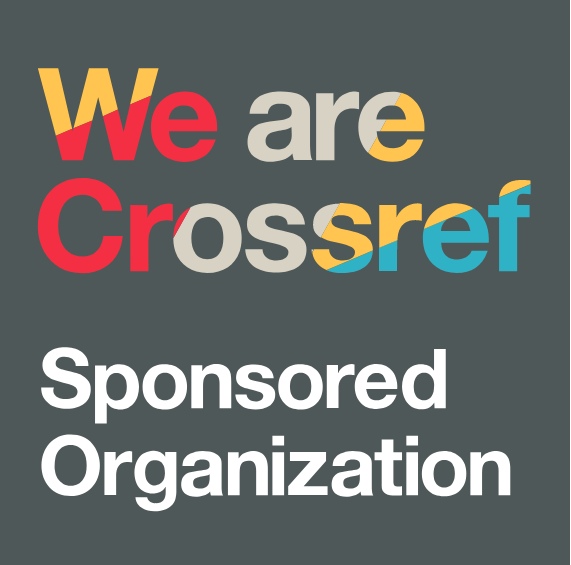Performance Measurement of Generation Y Employees with a Human Capital Approach
DOI:
https://doi.org/10.38035/dijefa.v3i6.1573Keywords:
Capital, Performance, Generation YAbstract
The era of globalization has resulted in several changes in views on strategic resources within a company, including human capital. Human capital is considered very important related to the company's non-financial performance. So this research tries to measure the performance of Generation Y employees with the Human Capital approach in the South Jakarta area. The aim of this research ismeasure influencehuman capitalconsisting ofindividual capability, individual motivation, the organizational climate, workgroup effectiveness,and leadership on the performance of Generation Y employees in the South Jakarta area. The method used is associative quantitative research, with the sample technique used is simple random sampling.
References
Dimitriou, C. K., & Blum, S. C. (2015). An Exploratory Study of Greek Millennials in the Hotel Industry: How Do They Compare to Other Generations? International Journal of Global Business, 8(1), 62–92.
Gaol, C., & Jimmy, L. (2014). A to Z Human Capital (Manajemen Sumber Daya Manusia) Konsep, Teori, dan Pengembangan dalam Konteks Organisasi Publik dan Bisnis. Jakarta: Widiasarana.
Gomes, F. C. (2003). Manajemen Sumber Daya Manusia. Jakarta: Andi Offset.
Idrus, N., Ng, P. K., & Jee, K. S. (2014). Sustaining Quality in Higher Education in Southeast Asia through Understanding Generational Changes. Journal of Applied Sciences, 14(16), 1819–1827. https://doi.org/10.3923/jas.2014.1819.1827
Lane, J.-E. (2017). The Public Sectors, Concept, Model and Approaches (3 ed.). London: SAGE Publications Ltd.
Mangkunegara, A. P. (2009). Manajemen Sumber Daya Manusia. Bandung: PT. Remaja Rosdakarya.
Mayo, A. (2000). The Role of Employee Development in the Growth of Intellectual Capital. Personnel Review, 29(4), 521–533. https://doi.org/10.1108/00483480010296311
Meier, J., & Crocker, M. (2010). Generation in the Workforce: Managerial Challenges. The Journal of Human Resource and Adult Learning. The Journal of Human Resource and Adult Learning, 6(1), 68–78.
Ongkorahardjo, M. D. P. A., Susanto, A., & Rachmawati, D. (2008). Analisis Pengaruh Human Capital Terhadap Kinerja Perusahaan (Studi Empiris pada Kantor Akuntan Publik di Indonesia). Jurnal Akuntansi dan Keuangan, 10(1), 11–21. https://doi.org/https://doi.org/10.9744/jak.10.1.PP.%2011-21
Prasetya, E. M., Utami, H. N., & Prasetya, A. (2016). Pengaruh Human Capital, Information Capital Dan Organizational Capital Terhadap Kinerja Karyawan (Studi Pada Karyawan PT Pln (Persero) Unit Induk Pembangunan VIII Surabaya). Jurnal Administrasi Bisnis S1 Universitas Brawijaya, 40(1), 86–96.
Schermerhon. (2005). Management (5 ed.). USA: John Wiley & Sons, Inc.
Sudibyo, Y. A. (2017). Pengaruh Human Capital Terhadap Kinerja Auditor (Studi Empiris Pada Kantor Akuntan Publik di Jakarta). Media Riset Akuntansi, Auditing & Informasi, 14(2), 15–44. https://doi.org/10.25105/mraai.v14i2.2054
Sukoco, I., & Prameswari, D. (2017). Human Capital Approach to Increasing Productivity of Human Resources Management. AdBispreneur, 2(1), 93–104. https://doi.org/10.24198/adbispreneur.v2i1.12921
Sutisna, H., Vitayala, A., & Syamsun, M. (2014). Peran Human Capital, Corporate Value dan Good Corporate Governance melalui Kinerja Karyawan terhadap Kinerja Perusahaan di PTPN VII Lampung. MANAJEMEN IKM: Jurnal Manajemen Pengembangan Industri Kecil Menengah, 9(2), 131–139. https://doi.org/10.29244/mikm.9.2.131-139
Triatmaja, D. W., & Kussudiyarsana. (2016). Pengaruh Human Capital Terhadap Kinerja Karyawan Unit Simpan Pinjam Koperasi Serba Usaha (Ksu) Mekar Surya Karanganyar. Skripsi. Universitas Muhammadiyah Surakarta.
Downloads
Published
How to Cite
Issue
Section
License
Authors who publish their manuscripts in this journal agree to the following conditions:
- The copyright on each article belongs to the author(s).
- The author acknowledges that the Dinasti International Journal of Economics, Finance & Accounting (DIJEFA) has the right to be the first to publish with a Creative Commons Attribution 4.0 International license (Attribution 4.0 International (CC BY 4.0).
- Authors can submit articles separately, arrange for the non-exclusive distribution of manuscripts that have been published in this journal into other versions (e.g., sent to the author's institutional repository, publication into books, etc.), by acknowledging that the manuscript has been published for the first time in the Dinasti International Journal of Economics, Finance & Accounting (DIJEFA).


























































